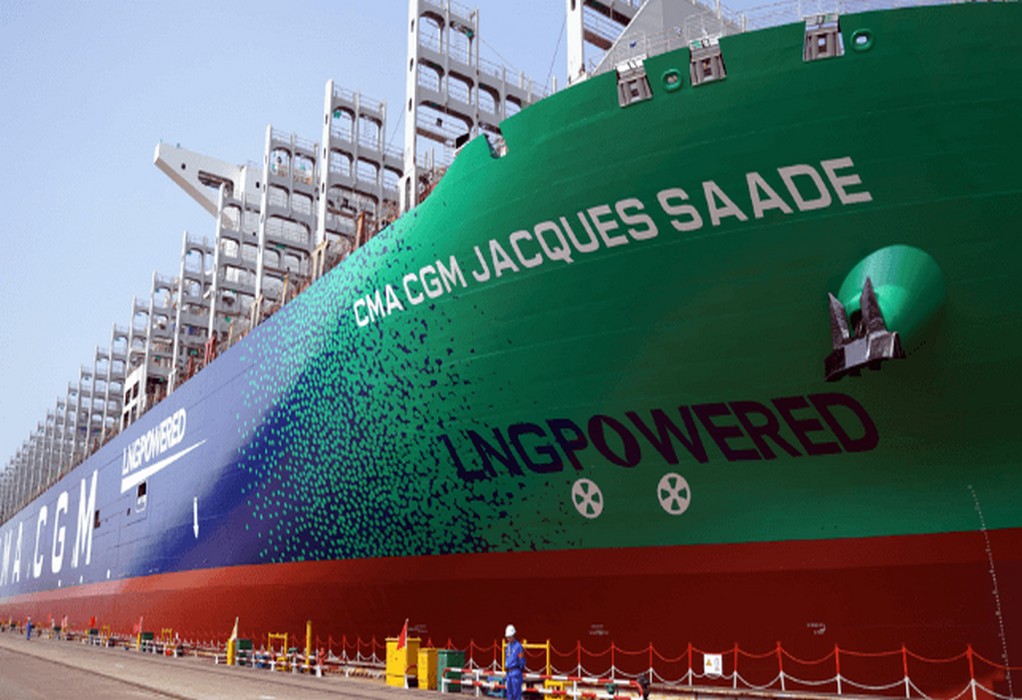2021 was a banner year for the expansion of LNG as a marine fuel, according to industry association SEA-LNG. In its annual report, the group pointed to record-setting newbuild orders for dual-fuel LNG vessels and an expanding network of bunkering facilities as further evidence that this fuel option is a popular and growing choice for vessel operators.
Citing data from Clarksons, SEA-LNG reports that LNG bunkering services will be available in 170 ports by the end of this year. In addition, over the course of 2021, LNG-fueled ships accounted for nearly 30 percent of the newbuild gross tonnage ordered worldwide, hitting a new record. For ULCVs, more than half the orderbook is either LNG-fueled or LNG-ready.
LNG has been a particularly popular choice in the boxship segment. Over the course of the year, CMA CGM ordered 10 LNG-fueled ships, Zim chartered 10, Hapag-Lloyd took six and MSC switched some of its existing newbuilding orders over to LNG fuel.
LNG bulkers, ferries and cruise ships are also taking off, and the car carrier segment is extending its interest in LNG. NYK laid out plans to to have 40 LNG-fueled PCTCs in service before the end of the decade, and MOL announced it wants 90 of its own by 2030. They are all expanding their orderbooks to match: UECC ordered three, K Line took eight, NYK took 12, MOL took four and Wallenius took two (with options for four more).
SEA-LNG believes that these orders show the industry’s confidence in the development of future supplies of bio-LNG and synthetic LNG, which could be metered into the supply of fossil LNG as they become available at scale. Quantities of bio-LNG are available today at several European ports, and the fuel has been used commercially at a 13 percent mix ratio by the boxship CMA CGM Jacques Saade.
SEA-LNG’s research, carried out by consultancy Sphera, suggests that fossil LNG reduces well-to-wake greenhouse gas emissions by up to 23 percent. However, many climate advocates disagree, citing the high rate of methane leakage from natural gas wells, compressor stations and pipelines in many producing regions. Methane – the main component of natural gas – is estimated to be about 86 times more potent than CO2 over a 20-year time scale.
“LNG’s potential to help shipping reach its GHG reduction goals is questionable,” wrote researchers for the World Bank in a report in August. “The availability of large amounts of sustainable and affordable biomass required to produce biomethane [bio-LNG] appears very uncertain. Additionally, synthetic carbon-based fuels like synthetic methane are expected to be more expensive than alternatives like ammonia or hydrogen.”
In response to the World Bank’s note, which advised against investing in LNG as a marine fuel, SEA-LNG said that only time would tell which solutions would help to decarbonize shipping.
“To suggest that investments not be made in the LNG sector is unwise,” the group wrote in its response. “SEA-LNG believes strongly that the transition to future fuels must not follow this prescriptive approach. It is far too early to decide what the real potential of various alternatives fuels will be for a highly complex, hard-to-abate, global industry.”
Source: Maritime Executive
Tags: Bunkering, LNG, SEA-LNG



Recent Posts
Himachal Pradesh Plans Major Boost to Public Transport with E-Buses and Digital Upgrades
Ammonia-Fueled Container Feeder Design Marks Progress in Maritime Decarbonisation
ABS Develops Industry-Leading EV Battery Fire Simulation Modeling
Wilhelmsen Ships Service Joins the Maritime Battery Forum to Accelerate Maritime Electrification
Indian Student Team Wins Communication Prize at Monaco Energy Boat Challenge 2025
Babcock’s LGE Business Secures Contract for Marine Ammonia Fuel System to Advance Shipping Decarbonisation
Associated Terminals Deploys Liebherr’s All-Electric Cranes in Landmark Move Toward Cleaner Cargo Handling
Sanmar delivers fully electric emissions-free tug to major global operator Svitzer